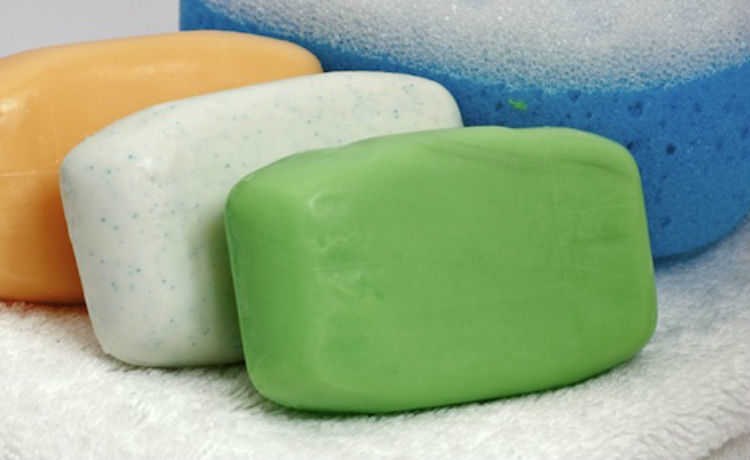Are you going to straighten your hair? Keep an eye on hazardous substances
Many hair straightening products are still illegally modified, which can compromise your health and that of your hair

Have you ever wanted to change the natural shape of your hair? But have you ever thought about what happens to frizzy or curly hair when it becomes straight? The process involves substances that can give the desired effect, but, on the other hand, can cause negative effects on your health and on the health of the professional who applies the product.
For frizzy or curly hair to be smooth, the straightening product changes its chemical bonds (hydrogen and keratin) and, together with the action of other ingredients, such as formaldehyde, caustic soda and ammonia-based compounds, the straightening effect does not it is stopped with a simple washing (permanent straightening) and can remain for several months. Temporary straightening (flat iron, flat iron), on the other hand, breaks chemical bonds in the hair that can return to its natural state with a simple contact with water.
In Brazil, permanent hair straightening processes are very common. The most popular are progressive brush, Japanese straightening, permanent brushing, relaxation, photonic straightening, among others. But few people are aware of the dangers of straightening that certain ingredients can offer. Let's go to them:
Formaldehyde
This volatile organic compound (VOC), also known as formaldehyde, is prohibited in Brazil if it exceeds a maximum concentration of 0.2% in cosmetic products. At this concentration, according to the National Health Surveillance Agency (ANVISA), formaldehyde serves as a preservative (prevents the growth of microorganisms). Under Brazilian law, formaldehyde cannot be used as a hair straightener in products authorized by ANVISA. This does not prevent the production, sale and use of hair straightening products that contain high concentrations of formaldehyde and which are not authorized by ANVISA (illegal and illegal). It also does not prevent the purchase of these products through the internet.
The Brazilian progressive toothbrush based on keratin became known worldwide, mainly in the United States. However, the straightening products were not produced in Brazil and contained large concentrations (much higher than 0.2%) of formaldehyde (even those that indicated to be formaldehyde-free). This fact led to the ban of the product in Canada and the countries of the European Union.
Uncontrolled concentrations of formaldehyde in straightening products can lead to total hair loss, wounds (burns) on the scalp and long-term use can lead to cancer, in this case both for the professional applying the product and for the user (learn more about formaldehyde here).
Caustic soda
This base, also known as sodium hydroxide, is widely used in industrial processes, such as in the manufacture of paper, soap, detergent and fabric. In addition, it can be found in hair straighteners that, through this use, can pose many health risks. Caustic soda is corrosive, as is potassium hydroxide, which is also found in hair straightening products. When in contact with the skin, especially the scalp, these products cause itching, redness and burns that leave scars, peeling, swelling, headache, burning. For those who have frequent contact with these products, such as hairdressers, the symptoms that may arise are irritation in the throat and itchy nose, lung problems, coughing, watery eyes and shortness of breath.
The maximum permitted concentration of caustic soda in hair straighteners, according to ANVISA, is 2% for non-professional products and 4.5% for professional products. According to ANVISA's awareness booklet, if you are going to apply the product to your hair on your own, use general purpose products and do not use products with a professional destination. These always contain modes of application that require devices and techniques that the average person does not have, in addition to containing higher concentrations of compounds.
Although most hair straightening products available for purchase are registered by ANVISA, some still manage to break the law, and add high amounts of dangerous ingredients, such as caustic soda, making the product a potential cause of damage to health. According to a study, over-the-counter straightening products were tested and the result showed concentrations of caustic soda higher than those allowed by law, that is, if ANVISA sets a limit of 4.5% for professional use products, in the tests, products with up to 12% caustic soda were identified.
other ingredients
In smoothing products you can find other active substances, such as ammonium thioglycolate, hydrated lime (potassium hydroxide), lithium hydroxide, carbonate/guanidine hydroxide. They produce effects similar to those of caustic soda and formaldehyde, such as redness on the skin, itching and, if used improperly, can cause burns.
Tips
There are many straightening recipes with natural products. However, so far, these have no scientific proof and can still be understood as beliefs. To minimize your exposure to the toxic ingredients of hair straighteners, there are many tips and some options for less harmful active ingredients that offer the hair straightening effect.
If you've already gone through the straightening process, pay attention to the compatibility between the active ingredients. Incompatibility can damage the hair and not produce the desired effects. Hair subjected to processes with ammonium thioglycolate are incompatible with products based on guanidine carbonate, sodium, potassium, calcium and lithium hydroxide. See more in an explanatory video on the subject (in English):
Many people carry out the straightening processes in beauty salons. To check whether the product used by the salon is illegal (clandestine) or not, check if the product has the ANVISA/Ministry of Health registration number on the label, as well as the expiration date. After that, if during the application of the product you feel burning or itching on the scalp, ask the professional to rinse your hair immediately. The use of straighteners regulated by ANVISA, if applied correctly, should not cause burning, itching or hair loss during and after application. If you experience a strong odor from the product, suspect that this product may have been altered (formaldehyde and/or caustic soda added). It is also important to always test the product on a small strand before applying it to the entire hair.
A new ingredient that has emerged to replace the illegal use of formaldehyde or caustic soda in hair straighteners is carbocysteine. Considered an amino acid, the substance is not used initially to straighten the hair, but to reduce the volume (up to 90%), rebuild and seal the hair fibers, moisturize and give shine. As a result of this treatment, straightening occurs gradually.










